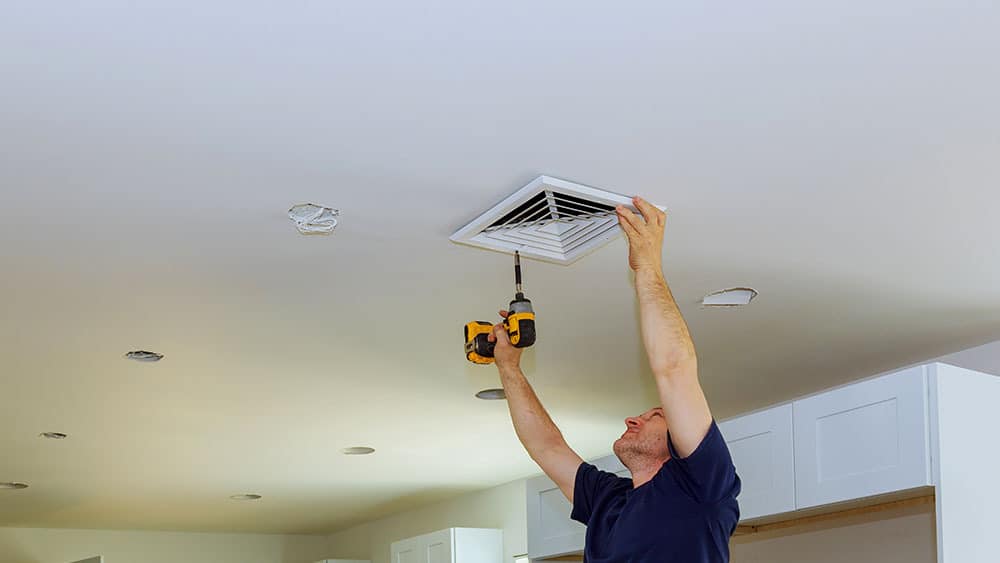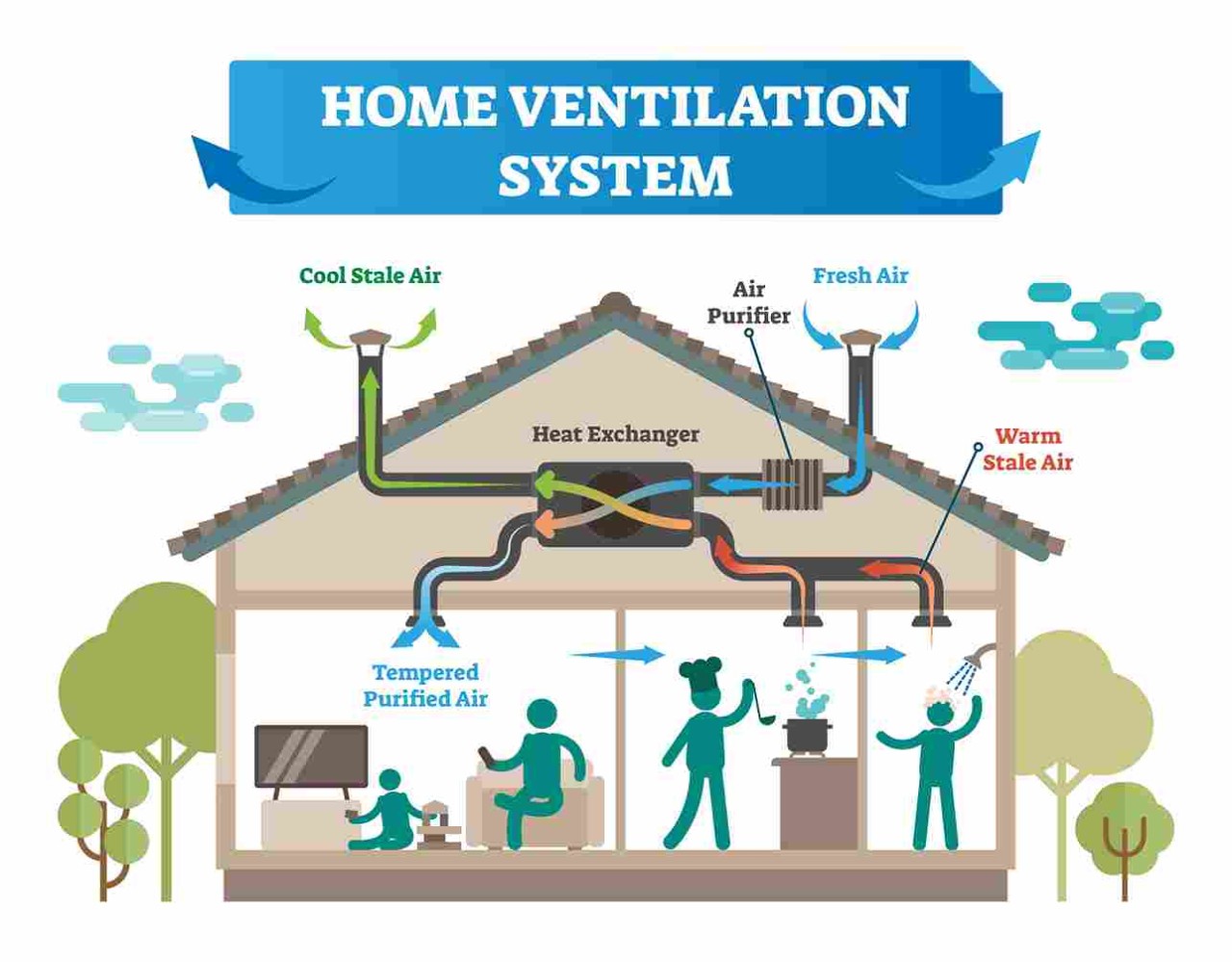The Role of Home Ventilation in Protecting Against Mold And Mildew and Indoor Allergens
Home ventilation is a critical component in preserving a healthy indoor atmosphere. It manages humidity levels, which can protect against the growth of mold and the buildup of allergens. Lots of home owners neglect the significance of proper air flow, commonly resulting in hidden concerns. Recognizing exactly how air flow systems function and their impact on air top quality could be the key to a much healthier home. What actions can be taken to boost these systems successfully?
Understanding Home Ventilation Equipments
While lots of house owners may forget the importance of ventilation, understanding home air flow systems is essential for preserving indoor air high quality and protecting against mold and mildew development - Home Ventilation Melbourne. These systems assist in the exchange of stagnant indoor air with fresh outdoor air, efficiently lowering toxins and dampness levels. Common types include all-natural air flow, which counts on wind and temperature level distinctions, and mechanical air flow, which uses followers and ducts to control air movement. Furthermore, balanced ventilation systems integrate both techniques to maximize air quality. Appropriately made and kept air flow systems can help manage temperature level and humidity, making certain a comfy living setting. Home owners should take into consideration elements like home climate, design, and occupancy when selecting a ventilation system to finest match their needs and boost overall air quality
The Impact of Humidity on Mold Growth
Humidity plays a vital function in mold and mildew growth, making it a crucial element for home owners to keep an eye on. Mold and mildew prospers in atmospheres where moisture degrees surpass 60%, as these conditions supply the dampness necessary for spores to multiply and germinate. High humidity can arise from numerous sources, consisting of inadequate ventilation, water leakages, and food preparation or bathing tasks. When moisture levels continue to be elevated, mold and mildew can establish swiftly on natural materials such as drywall, fabric, and wood. Home owners need to make use of dehumidifiers and assure correct ventilation in areas susceptible to wetness, such as washrooms and cellars. Maintaining interior humidity in between 30% and 50% can substantially decrease the threat of mold and mildew growth, contributing to a healthier living environment.
Determining Common Indoor Allergens
Indoor settings can harbor a selection of allergens that impact health and wellness and convenience. Common interior irritants include dirt termites, pet dander, mold and mildew spores, and plant pollen. Allergen grow in bed linen, carpets, and furniture, preying on organic product and adding to respiratory problems. Pet dander, composed of little flakes from skin and fur, can cause allergic reactions in delicate individuals. Mold spores, commonly present in moist locations, can proliferate and impact air high quality. Furthermore, pollen can penetrate homes through open windows or on clothes. Identifying these allergens is crucial for preserving a healthy indoor atmosphere. Awareness of their presence allows homeowners to take positive steps to lessen exposure and improve overall indoor air high quality.
Advantages of Correct Air Flow
Correct ventilation is essential for maintaining a healthy interior atmosphere, as it assists to manage air top quality and decrease the build-up of pollutants. go to these guys Appropriate air flow assists in the exchange of interior and outside air, thereby weakening dangerous materials such as unpredictable organic substances, allergens, a knockout post and dust. This procedure not only boosts convenience yet likewise adds to the general wellness of residents by reducing respiratory system issues (Home Ventilation Melbourne). Appropriate air flow successfully regulates moisture levels, minimizing the probability of mold growth and promoting a drier environment favorable to health and wellness. Additionally, it can boost energy efficiency by ensuring that cooling and heating systems operate better, causing lower energy costs. On the whole, appropriate air flow is a critical part in promoting a healthy and balanced and secure space

Tips for Improving Home Ventilation
Although numerous house owners may neglect it, improving home air flow is important for boosting air top quality and preventing mold development. One effective technique is to on a regular basis open windows to promote cross-ventilation, permitting fresh air to flow. Mounting exhaust fans in bathrooms and kitchens can effectively get rid of moisture-laden air, lowering humidity degrees. House owners ought to likewise consider making use of air purifiers with HEPA filters to catch pollutants and irritants. Routinely maintaining heating and cooling systems, consisting of transforming filters, assurances come to a head air flow and efficiency. Securing leaks around doors and windows can avoid outdoors air from getting in, which helps preserve a constant interior setting. Finally, including houseplants can naturally boost air top quality while including visual worth to the home.
Often Asked Inquiries
How Frequently Should I Clean My Home Ventilation System?
Figuring out how often to cleanse a home air flow system depends upon various elements, including usage and ecological problems. Home Ventilation Melbourne. Generally, experts advise a comprehensive cleaning every 3 to 5 years to maintain optimal airflow and effectiveness
Can Plants Help Decrease Indoor Allergens?
Research study indicates that certain interior plants may help in reducing irritants by boosting air quality and enhancing moisture. Their performance varies, and preserving a clean atmosphere continues to be crucial for taking care of indoor allergens effectively.
What Sorts Of Air Filters Are Best for Mold And Mildew Avoidance?

Are There Specific Air Flow Demands for Cellars?

How Do I Know if My Ventilation Is Working Effectively?
To figure out efficient air flow, one need to monitor moisture degrees, check air movement with vents, and observe indicators of condensation or stationary air. Normal assessments can indicate whether the system appropriately circulates and exchanges interior air.
Comprehending just how ventilation systems function and their effect on air top quality might be the key to a healthier living area. While several home owners may overlook the value of ventilation, recognizing home ventilation systems is vital for preserving indoor air quality and stopping mold and mildew growth. Usual types consist of natural ventilation, which counts on wind and temperature differences, and mechanical ventilation, which uses fans and ducts to manage air flow. Correct ventilation is necessary for keeping a healthy and balanced indoor atmosphere, as it assists to manage air high quality and minimize the buildup of pollutants. Several home owners may ignore it, enhancing home air flow is crucial for improving air top quality and preventing mold and mildew development.